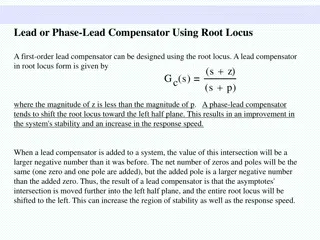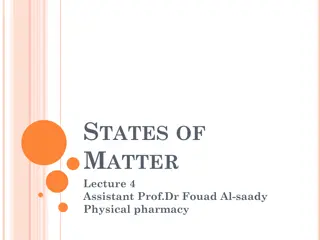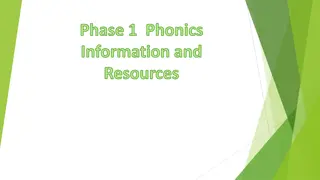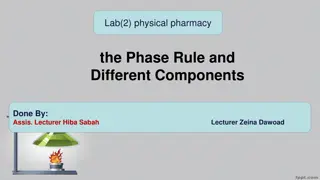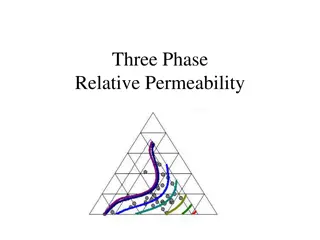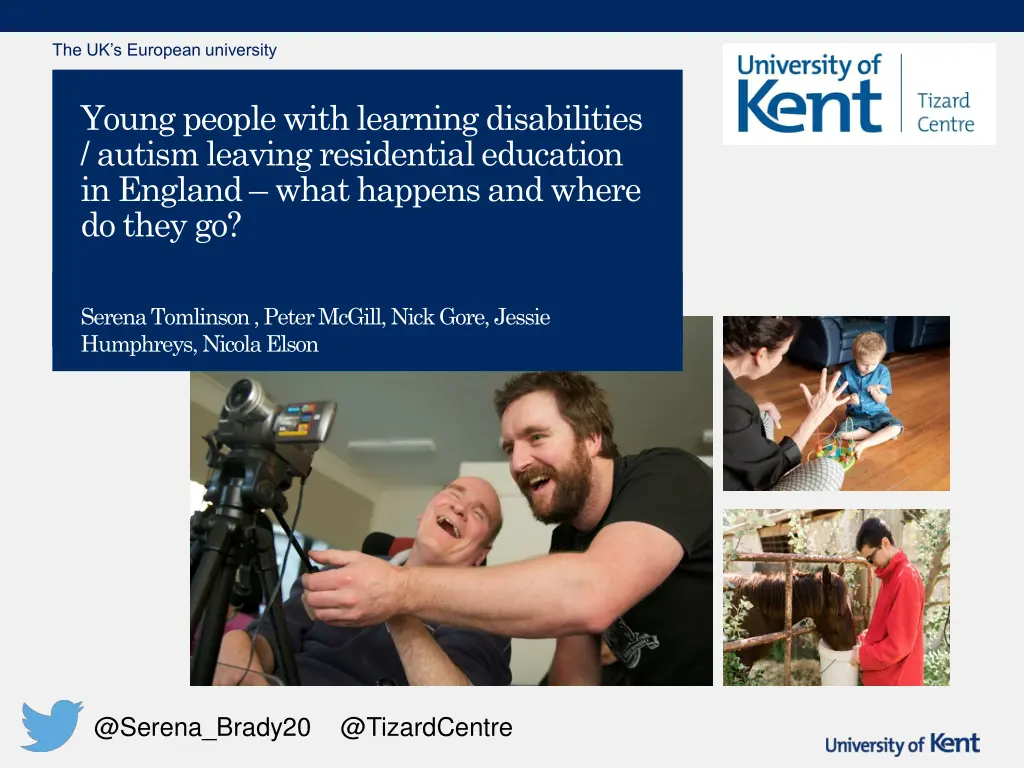
Understanding Transition from Residential Education for Young People with Disabilities and Autism in the UK
Explore the challenges and outcomes of young individuals with disabilities and autism leaving residential education in England, shedding light on the transition to adult social care. The study delves into the complexities of out-of-area placements and the impact on individuals' well-being, with a focus on policy implications and transition experiences.
Uploaded on | 1 Views
Download Presentation

Please find below an Image/Link to download the presentation.
The content on the website is provided AS IS for your information and personal use only. It may not be sold, licensed, or shared on other websites without obtaining consent from the author. If you encounter any issues during the download, it is possible that the publisher has removed the file from their server.
You are allowed to download the files provided on this website for personal or commercial use, subject to the condition that they are used lawfully. All files are the property of their respective owners.
The content on the website is provided AS IS for your information and personal use only. It may not be sold, licensed, or shared on other websites without obtaining consent from the author.
E N D
Presentation Transcript
The UKs European university Young people with learning disabilities / autism leaving residential education in England what happens and where do they go? Serena Tomlinson , Peter McGill, Nick Gore, Jessie Humphreys, Nicola Elson @Serena_Brady20 @TizardCentre
DISCLAIMER This presentation reports on independent research funded by the NIHR School for Social Care Research. The views expressed in this presentation are those of the author(s) and not necessarily those of the NIHR SSCR, NHS, the National Institute for Health Research or the Department of Health.
Overview Context: the Transition to adult social care from residential educational settings project Background Aims Methodology Phase 1 results Identifying residential educational settings Quantitative survey results - recent transitions Limitations Conclusions from phase 1
Context The Transition to adult social care from residential educational settings project
Background out-of-area adult placements Out-of-area residential placements for adults with learning disabilities are receiving increasing scrutiny in the UK National scandals Link to a range of poor outcomes (e.g. Beadle-Brown et al., 2006; Barron et al., 2011; Deveau et al., 2015; Emerson & Robertson, 2008) Policy emphasis on their reduction Reasons for use of out-of-area placements are varied, but the presence of challenging behaviour is often cited (Mansell, 2007; McGill et al., 2010; Perry et al., 2013), which is also cited as a key reason for seeking a residential school placement for young people
Background (continued) Residential school placements in the UK are often located out-of-area 230/600 children with ID, and 250/700 children with ASC at residential school were placed out-of-area in 2014 (Pinney, 2014) likely to be an underestimation Increasing recognition that being placed in an out-of-area residential school is linked to being placed out-of-area as an adult(LGA & NHS England, 2014; McGill et al., 2010) Reasons for this unclear perhaps due to transition process? Existing research relating to transition (e.g. Heslop & Abbott, 2007, 2008) reports mixed experiences, with many families reporting that the process was initiated late, involved variable support for the young person and their family, and was often exacerbated by the distance between the school and the young person s home area
Transition to adult social care from residential educational settings project Project funded by NIHR School for Social Care Research at the Tizard Centre, University of Kent Aims: 1 Identify the type and location of adult support settings where individuals who have transitioned from a residential educational setting are placed 2 Examine factors which may lead to a young person being placed in- or out-of-area following transition from a residential educational setting
Methodology Phase 1 1. Identify all residential educational settings in England 2. Survey all residential schools & colleges in England Collect brief, anonymous information on all young people with a learning disability or autism who transitioned after the age of 16 in last 3 years (for schools) or last 1 year (for colleges) Collect brief information on the characteristics of the school / college itself, and any transition policies / guidance 3. Survey all local authorities in London and the South East of England Collect brief, anonymous information on all young people who transitioned after the age of 16 from a residential school in the past 3 years or residential college in the past 1 year
Phase 1 results 1. Identifying residential educational settings in England
Main findings 343 settings identified, 59 offering post 16 support only Concentrated in South East and West of England Up to 8810 placements available Mean number of residential placements per setting = 27.8 (range 2-252) Most placements offered up to 52 weeks per year and up to 7 nights per week 128 settings (37.3%) notregistered for SEN categories associated with LD / ASC Almost half governed by private organisations Governance Gov 18% Charity 34% Private 48%
Phase 1 results 2. Quantitative survey with residential schools / colleges
Methodology All residential educational settings for young people (aged over 16) with learning disabilities / autism in England invited to take part Asked to complete two types of questionnaires 1. Young person questionnaires About each young person who had transitioned in the past 1 year (for colleges) or past 3 years (for schools) Demographic information about the young person, their residential educational placement, and any placements following their transition from the educational placement 2. Setting questionnaire Information about the educational setting itself, including size, staffing, fees, support offered etc.
Sample 49 settings returned data (31 schools, 18 colleges) Generally representative of the wider population of residential educational settings, but significant over representation of settings that also ran adult provision 320 young person questionnaires (249 school, 71 college) 47 setting questionnaires (30 school, 17 college)
Young person characteristics 320 young people, median age 19 at transition (range 16-29) % (n) Gender Male Female Ethnicity White Black / minority ethnic Level of learning disability None Mild / moderate Severe / profound Autism spectrum condition Physical / sensory / health impairment Challenging behaviour Mental health condition Looked after status Not looked after Accommodated Care order 70.6% (226) 29.4% (94) 80% (256) 20% (58) 2.5% (8) 45.9% (145) 50% (160) 62.8% (201) 46.9% (150) 53.4% (171) 10.6% (34) 63.4% (203) 26.3% (84) 7.2% (23)
Residential education placements Young people stayed an average of 5.3 years at their residential educational placement (range 0-15 years) 81.9% of residential educational placements were out of area, a median 50 miles from home (range OOA: 7-250 miles) Likelihood of being placed out-of-area for education placement was not significantly associated with young person needs Funding body Education Social Services NHS Skills funding agency Education funding agency Private % 89.4% 42.8% 10.3% 0.3% 8.4% 0.9% Funding arrangements varied 45% of placements were joint funded
Where did they go? 49.1% were placed out-of-area, a median of 50 miles from home (range OOA: 0-300 miles). Equivalent to 594 young people per year More likely For young people with severe / profound learning disability X2(1, N = 289) = 16.119, p < .001, small effect size (phi = -.236) For young people without a mental health condition X2(1, N = 295) = 4.934, p < .05, small effect size (phi = -.129) If the young person had not had police involvement for their behaviour X2(1, N = 299) = 4.725, p < .05, small effect size (phi = -.126) Significant association between being placed out-of-area for residential educational placement, and subsequently transitioning to an out-of-area placement X2(1, N = 299) = 5.273, p < .05, small effect size (phi = .133)
Type of placement Reported specialism Challenging behaviour Mental health Physical / sensory / health impairment Forensic Secure Autism spectrum condition Not specialist Placement type Residential care Residential college Supported living Prison / secure Residential school Hospital ATU Family home Other % (n) % (n) 27.8% (89) 24.1% (77) 20.9% (67) 0.6% (2) 2.2% (7) 1.3% (4) 0.6% (2) 23.4% (75) 1.2% (4) 32.5% (104) 5% (16) 30% (96) 1.9% (6) 1.6% (5) 37.8% (121) 34.4% (110) Only 22.5% of placements were jointly funded, with most being funded by either education or social services 22.9% of residential educational settings had a formal relationship with the young person s subsequent placement In addition, around 40% of placements were in settings that the residential educational provider had used sometimes or often for other young people
Placement changes 44 1st placements were known to have ended. Where information was available (n=21), young people stayed on average 1 year at their first placement. Reasons given for end of placement: End of education course, college closed, lack of renewal of course Placement unable to manage behaviour Mental health difficulties Lack of activity for young person Transition to other services mainstream settings, supported living, young adult provision, residential care Data provided on 24 2nd placements 8 (33.3%) young people were placed out of area for their 2nd placement. Of these, 2 had been placed in their home area for their 1st placement 15 (62.5%) young people were placed in their home area for their 2nd placement, of these 10 had been placed out of area for their 1st placement Placement types similar to those for placement 1
Limitations Data reliant on residential educational setting records, which may be incomplete or inaccurate Lack of local authority response so far which makes it difficult to triangulate data No comparative data on transitions from day schools / colleges
Conclusions from phase 1 Little is known about the UK residential educational sector overall, and reliable information is very difficult to find Estimates vary, but significant number of young people (particularly those with complex needs) attend residential educational settings in England, often far from home, and spend a large proportion of their youth / young adulthood in these settings Residential educational settings in England appear to feed out-of- area adult placements, with half of young people who attend them transitioning out-of-area when they leave For those who do return to their home area, half of these return to the family home
THE UKS EUROPEAN UNIVERSITY Serena Tomlinson s.tomlinson@kent.ac.uk +441227 827446 @Serena_Brady20 @TizardCentre www.kent.ac.uk


